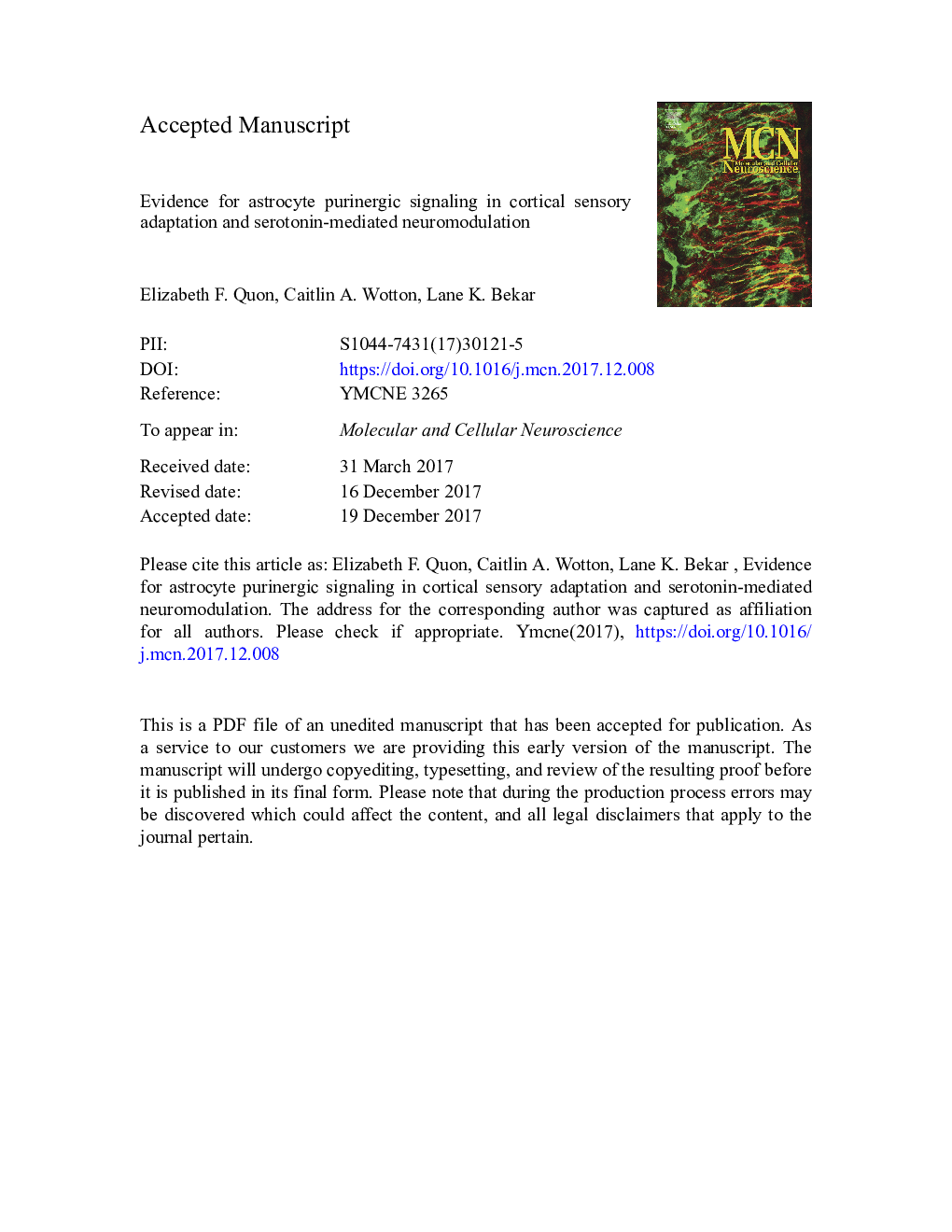| Article ID | Journal | Published Year | Pages | File Type |
|---|---|---|---|---|
| 8478368 | Molecular and Cellular Neuroscience | 2018 | 19 Pages |
Abstract
In the somatosensory cortex, inhibitory networks are involved in low frequency sensory input adaptation/habituation that can be observed as a paired-pulse depression when using a dual stimulus electrophysiological paradigm. Given that astrocytes have been shown to regulate inhibitory interneuron activity, we hypothesized that astrocytes are involved in cortical sensory adaptation/habituation and constitute effectors of the 5HT-mediated increase in frequency transmission. Using extracellular recordings of evoked excitatory postsynaptic potentials (eEPSPs) in layer II/III of somatosensory cortex, we used various pharmacological approaches to assess the recruitment of astrocyte signaling in paired-pulse depression and serotonin-mediated increase in the paired-pulse ratio (pulse 2/pulse 1). In the absence of neuromodulators or pharmacological agents, the first eEPSP is much larger in amplitude than the second due to the recruitment of long-lasting evoked GABAA-dependent inhibitory activity from the first stimulus. Disruption of glycolysis or mGluR5 signaling resulted in a very similar loss of paired-pulse depression in field recordings. Interestingly, paired-pulse depression was similarly sensitive to disruption by ATP P2Y and adenosine A2A receptor antagonists. In addition, we show that pharmacological disruption of paired-pulse depression by mGluR5, P2Y, and glycolysis inhibition precluded serotonin effects on frequency transmission (typically increased the paired-pulse ratio). These data highlight the possibility for astrocyte involvement in cortical inhibitory activity seen in this simple cortical network and that serotonin may act on astrocytes to exert some aspects of its modulatory influence.
Related Topics
Life Sciences
Biochemistry, Genetics and Molecular Biology
Cell Biology
Authors
Elizabeth F. Quon, Caitlin A. Wotton, Lane K. Bekar,
